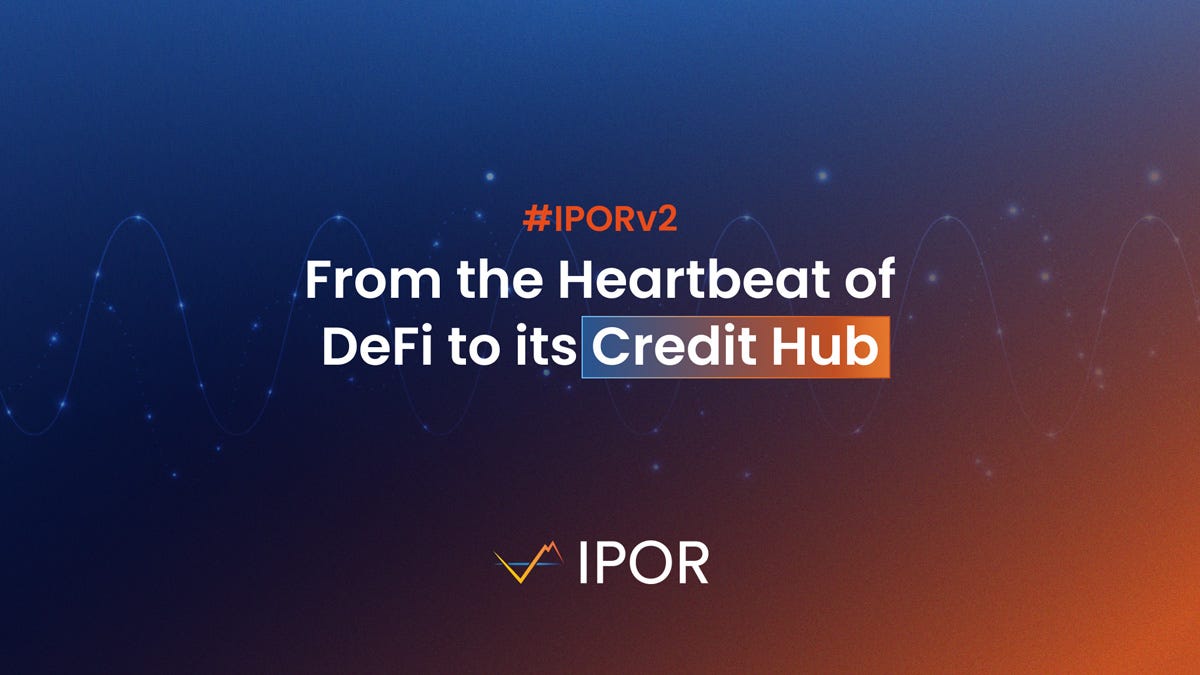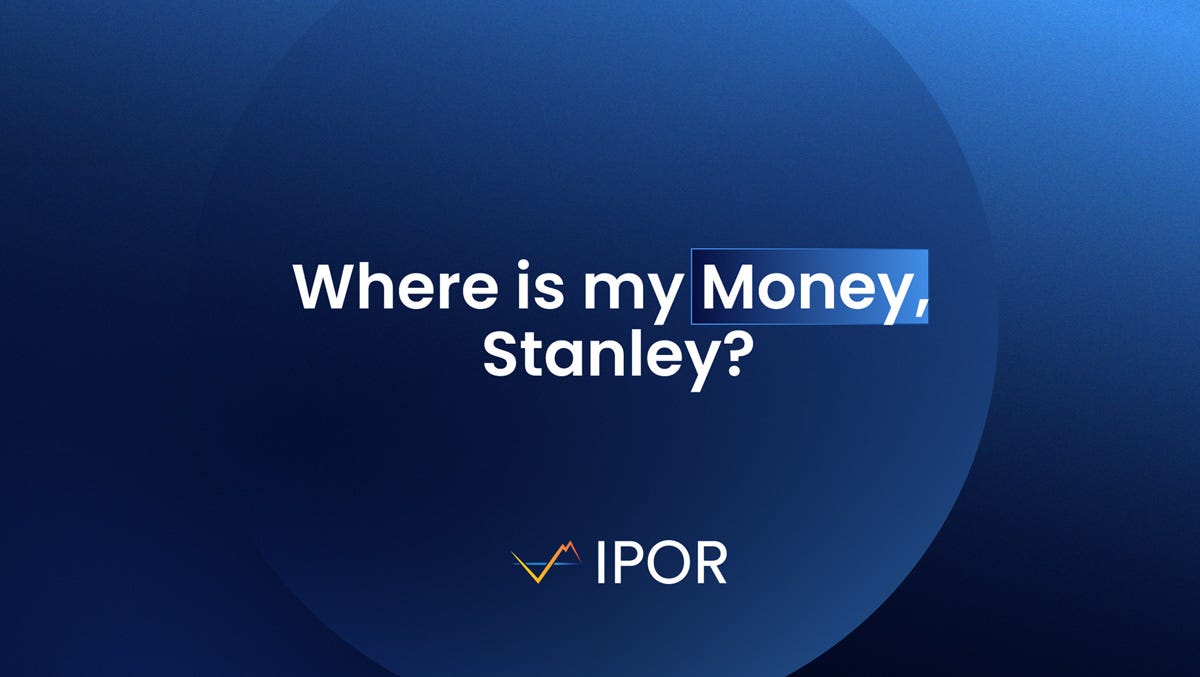- Eli5DeFi
- Posts
- Redefining DeFi Credit Markets: An Introduction to IPOR Protocol v2
Redefining DeFi Credit Markets: An Introduction to IPOR Protocol v2
Why IPOR Protocol v2 is the New Benchmark for DeFi Risk Management

IPOR Quick Bites
The IPOR Protocol aims to establish a fundamental layer in the DeFi credit markets. It does this by providing a benchmark interest rate (IPOR Index) and facilitating the use of Interest Rate Derivatives (IRD) on the blockchain.
The core components of the IPOR Protocol are as follows:
IPOR Index: This is an on-chain composite interest rate that combines data from multiple credit markets.
Interest Rate Derivatives (IRD): These are derivatives that are derived from the IPOR index.
IPOR Swaps: These are IPOR IRD Automated Market Makers (AMMs) that allow users to trade interest rates with liquidity providers.
IPOR Interest Rate Swaps (IRS) allow users to hedge and create strategies based on the interest rate to manage risk in DeFi.
IPOR v2 streamlines the interface and prioritizes the end user. Users can easily secure the best fixed rates with less complexity.
IPOR v2 also aims to bridge Real-World Assets (RWA) to the blockchain, thereby bringing more capital from the traditional world into the new on-chain economy.
Read This First!
Before we continue, we suggest that you read references below first. It will give you the details and explain how IPOR works and how IPOR v2 Envisioned.
If you enjoy our articles and would like to receive them in your inbox, you can subscribe to our newsletter by clicking the button below.

Understanding IPOR Mechanics
What is IPOR Index?
To understand how IPOR works, we need to know about the IPOR Index.
The IPOR index are on-chain public goods that include the Composite Interest Rate from Multiple Credit Markets such as Aave and Compound.
These indices can be used to see the current cost of credit, compare risk-adjusted and risk-free rewards, or serve as a reference for other credit products, deals, or derivatives.
Interest rate derivatives are financial instruments that allow a trader to take a position on the behavior of interest rates.
Interest rate swaps are one type of interest rate derivative that involves the exchange of cashflows between two parties taking opposing interest rate positions such as pay fixed or pay floating rates.

How IPOR and IPOR Swaps Works?
IPOR Protocol and IPOR Swaps
The IPOR Protocol helps user manage their interest rate risk by offering IPOR index and interest rate derivatives (IRD).
Users can also participate as liquidity providers (LP) by supplying capital to enable IRD trade and passively acting as counterparts in IRD trades. As an LP, you will receive revenue from:
Profits and losses generated from the trades.
Fees for depositing and withdrawing funds.
Liquidity mining incentives earned from staking IPOR tokens (Power IPOR/ pwIPOR)

Options to Trade IRD

Simplified Version
There are two ways to trade IRD in IPOR swaps:
Pay Fixed, Receive Floating (Rates Will Go Up)
Traders position themselves in this direction based on the floating rate.
If the floating rate falls below the fixed rate, the trader must effectively pay higher interest or incur a loss.
Conversely, if the floating rate goes above the fixed rate, the trader makes a profit.
Receive Fixed, Pay Floating (Rates Will Go Down)
Traders position themselves in this direction based on the fixed rate.
If the floating rate is higher than the fixed rate, the trader gets less interest or loses money.
On the other hand, if the floating rate is lower than the fixed rate, the trader earns a profit because they receive more interest.
By using IPOR interest rate swaps, user can hedging, arbitrage, or speculate on DeFi borrowing costs or lending yields
IPOR v2: From Heartbeat to The DeFi Credit Hub
What’s New?
IPOR v2 focuses on improving the end-user experience by emphasizing the simplification of an interface.
This interface allows users to access the deepest loans at the best fixed rates available in the market.
It achieves this by building a composable DeFi backend that connects multiple DeFi protocols and ecosystems, all while providing the seamless user interface possible.
So, let’s dive deeper to the upgrade of IPOR v2:
Derivatives Engine Overhaul
Diamond Proxy Architecture
Staking Rate Swap (SRS)

Derivatives Engine Overhaul
Extended Term Structure
The IPOR v2 AMM will provide various tenor options, ranging from 4 weeks to 3 months, with the potential to extend for longer durations of 6 months or 12 months (after proper testing).
AMM Overhaul
Removal of optionality (closing trade before maturity) and improvement of demand-driven spreads based on market conditions and pool exposure.
Removing the optionality will make AMM pricing less complex and narrow spreads (similar to options premiums), resulting in an improved trading experience.
Risk Engine and Risk Oracle
There are two tools: Risk Engine and Risk Oracle. They manage risk for the pool under different market conditions. It helps insure enough risk for hedging, but limits potential profit for large investors exploiting borrowing costs.
Diamond Proxy Architecture
Since IPOR v1, there have been many developments aimed at improving the user experience. One particular area of focus has been the architecture, which is complex and challenging to integrate.
The diamond proxy architecture or multi-facet proxy pattern has been implemented in IPOR v2 to enable users to effortlessly access the entire IPOR suite with a single approval.
This simplification does not compromise security and robustness; instead, it enhances the ability to integrate IPOR with other protocols.
Staking Rate Swap (SRS)
The popularity of Liquid Staking Derivatives (LSD) in the DeFi space is growing. By staking your Ethereum with an LSD provider, you can receive liquid derivative tokens that can easily be combined with other assets.
An important point to consider in relation to IPOR is that LSD generates interest. This interest-generating product works in conjunction with IPOR, allowing for the conversion of fixed staking rates to floating rates.
IPOR is actively developing and rigorously testing Staking Rates (similar to the IPOR index) and Staking Rates Swap (SRS), which are also interest derivatives.
With the introduction of SRS, IPOR has evolved into a protocol that enhances the composability of LSD and provides protection against the risk of fluctuating interest rates.

Conclusions
Improving the end-user experience and optimizing the mechanics is the initial step for adopting and distributing the IPOR v2 product.
The interest rate created by IPOR has the potential to become the standard interest rate index in decentralized finance (DeFi).
Developing an interest-based rate that aligns with IPOR will create opportunities to connect other yield-generating assets from the traditional market. In other words, Real-World Assets (RWA) are possibly the next area of focus for IPOR v2 after SRS.
That’s a Wrap and Thank You!
I hope you enjoyed the articles!
I'm working on improving this newsletter and would love to hear your thoughts on what you'd like to see more of.
Thank you for reading!




Reply